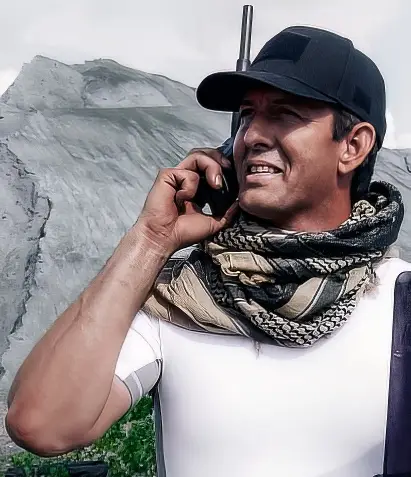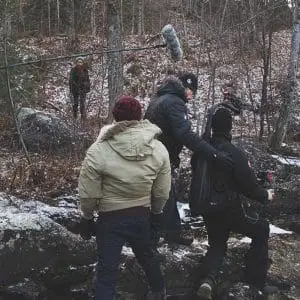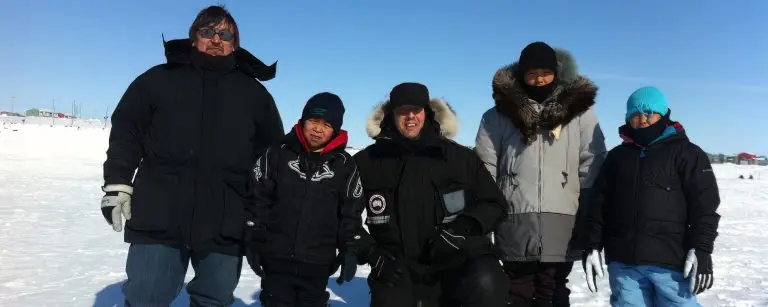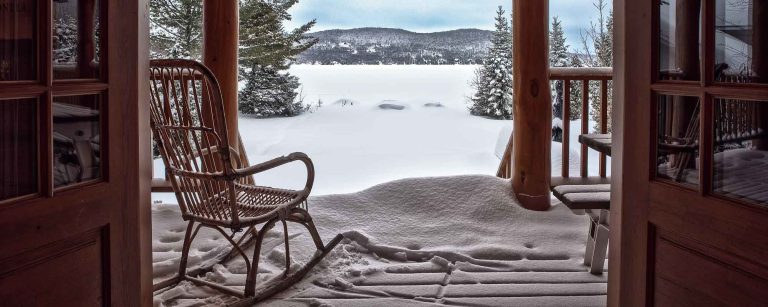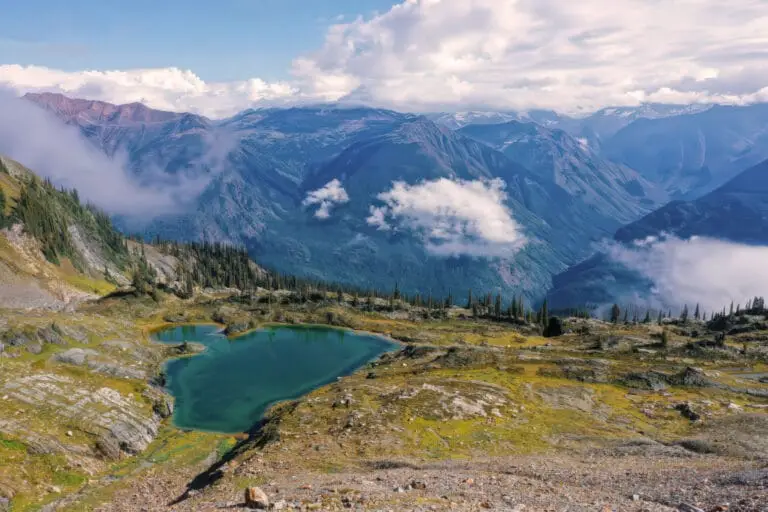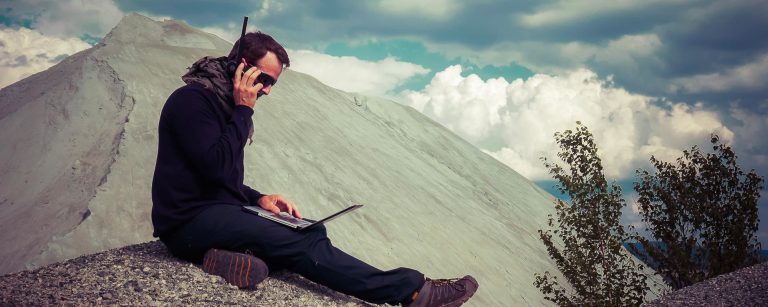Canada has a diverse cultural heritage, including the unique and varied cultures of its Indigenous peoples. First Nations communities across the country offer a variety of traditional knowledge, languages, and rituals that provide a unique view into Canada’s rich cultural legacy. There is plenty to discover and learn about Canada’s Indigenous cultures, from the colourful powwows that display Indigenous dance, music, and art to the different languages, traditions, and ways of life that reflect the unique identities of each community. This blog will explore different aspects of First Nations cultures, such as their history and traditions, as well as the importance of amplifying Indigenous voices and promoting cultural heritage. We will also look at the importance of films and documentaries in capturing and conveying the beauty and complexity of these cultures, as well as offer advice on how to conduct research and find the resources needed to create realistic and respectful portrayals of Indigenous communities.
More than 50 distinct Indigenous languages are spoken throughout Canada’s more than 600 First Nations communities. Many of the unique customs and rituals of First Nations communities have survived the passage of time and are actively honoured and observed by contemporary members of these communities. The Indigenous people of Canada who are not Inuit or Métis are referred to as First Nations.
The traditions of the First Nations are extremely varied and distinctive from one area to the next. Many First Nations on the West Coast, for instance, have deep cultural ties to the sea and make their living from salmon fishing. The Plains Cree, Blackfoot, and Saulteaux are just a few of the First Nations groups who have a history of nomadic or semi-nomadic existence while honing their hunting and gathering skills across the grasslands. Both the Inuvialuit and the Gwich’in of the Canadian North have strong ties to the land and subsist primarily on hunting and trapping.
As a filmmaker, you can gain valuable insights into Canada’s past and present Indigenous communities by learning about and documenting First Nations culture and tradition. Filmmakers may give audiences a window into the First Nations’ rich cultural heritage and experiences via the use of storytelling and visual arts.
For instance, a documentary could focus on the customs of the Coast Salish people, such as their art, carving, and totem poles. They might record the Inuit’s throat singing and drum dancing or the drumming and dancing of the Cree and Ojibwe. The Dene have a rich history with the land and its resources, and this might be a great opportunity to share their wisdom with the world.
Filmmakers who immerse themselves in First Nations culture and tradition can gain a rich understanding of Canada’s Indigenous peoples and a deeper appreciation for the country’s cultural variety. When working on such projects, it’s crucial to have an open mind and respect for other cultures, as well as to collaborate with Indigenous people to ensure that their values and beliefs are respected.
Including First Nations, Inuit, and Métis, Canada is home to about 600 officially recognized First Nations communities and over 1.4 million Indigenous people.
How to Get into Indigenous Cultures' Hidden Treasures: Principles and ideas in Collaborative Resource Acquisition and Cultural Context Creation
One of the most enriching things for a filmmaker to do is to immerse themselves in a new culture. The Indigenous community must be treated with the highest respect and understanding if the initiative is to be successful. In order to accomplish this, in-depth investigation is required. In this piece, we’ll go over some pointers for conducting research with First Nations communities in Canada, so you can get the most out of your collaboration.
Realize first and foremost that every group has its own set of customs, norms, and values. It is important to start your project research by gathering information on the people you will be helping in the neighbourhood. To begin learning about the local traditions, practices, and values, you should contact community leaders, elders, and organizations.
Making connections with locals can yield crucial cultural context and information for crafting a credible narrative. It’s crucial to be polite, courteous, and approachable when reaching out. The key to a productive and mutually respectful collaboration will be establishing solid rapport and trust with local residents.
In addition, remember that not every information is freely accessible. Some parts of Indigenous culture are kept private unless amongst members of the same community or during ceremonial occasions. Recognize that not everything may be accessible for your project due to privacy concerns.
Keep in mind that there has been widespread misrepresentation and stereotyping of Indigenous cultures in popular media. As a filmmaker, it is crucial that you approach the project with cultural awareness, sincerity, and respect for the community’s values and traditions. In this way, you can guarantee that your project faithfully and appropriately reflects the culture of the area it serves.
Attending a powwow
Attending a powwow is one opportunity to experience the vibrant and diverse cultures of Canada’s First Nations. Depending on the community hosting the event, these gatherings generally incorporate traditional music, dancing, and costumes. Some powwows may place an emphasis on competitiveness, with dancers competing for prizes, but others may emphasize spiritual or communal components. Attending a powwow may be a powerful and enlightening experience nonetheless.
The Pow-Wow Trail is a practical way for anyone interested in attending numerous powwows to follow events from one community to the next. The Trail provides information on powwows held around the nation, including the date, location, and contact information for each event.
However, it is essential to remember that powwows are not tourist attractions. They are cultural events with profound significance for Indigenous communities and should be treated with humility and respect. Before filming, filmmakers and documentary crews must obtain permission from the community hosting the event. This expresses respect for the community and facilitates a greater comprehension of their traditions and ways of life.
Over the years, Films.Solutions has collaborated with numerous Indigenous communities to help communicate their story via film. Respecting the traditions and values of these communities has allowed us to capture the complexity and diversity of Indigenous cultures and foster a deeper appreciation for their experiences.

Examine the benefits of incorporating traditional ways of knowing and learning into your project, as well as the importance of traditional knowledge itself.
The importance of knowing the fundamentals as a filmmaker cannot be overstated. It is crucial to consider the traditional knowledge and ways of knowing that have been passed down through generations in First Nations communities while working on a project that incorporates those communities. This information is priceless since it can provide light on the community’s background, customs, and more.
The term “traditional knowledge” refers to a wide variety of behaviours and abilities, such as familiarity with the land, the use of medicinal plants, hunting and fishing methods, storytelling, and language. This information is not a static artifact; rather, it is an active tradition that has adapted to new contexts and conditions over time. You may learn more about the community and do your part to keep and spread this valuable cultural heritage if you include traditional knowledge in your project.
Establishing rapport with locals, such as elders and knowledge keepers, is essential for gaining access to traditional information. These people have lived through significant portions of the community’s history and can provide light on the culture and customs of the area. Building trust and lasting relationships with these people is crucial to the success of your project, and you may do so by approaching them with respect and a willingness to learn.
As a filmmaker, you should value traditional knowledge and try hard to incorporate it into your projects. To do so, you might search for ways to highlight the community’s special expertise and talents, as well as incorporate traditional traditions and lessons within your film. Taking this step will not only help you paint a more accurate and engaging picture of the town, but it will also help you promote the community’s rich cultural history for future generations.
Traditional wisdom has immense importance in the filmmaking process, as I hope I’ve demonstrated. Spending time learning about the community’s history and customs will help you better understand its culture and contribute to the success of your project. You can’t expect your film to be a success if you don’t treat the locals with dignity and curiosity as a filmmaker. Incorporating local wisdom into your work not only helps the community, but also gives your viewers fresh insight into the topic at hand, which can have a profound effect on their outlook.
Emphasize the importance of displaying the diversity of First Nations cultures and traditions while avoiding stereotypes or generalizations.
As filmmakers, it is our responsibility to highlight the world’s rich cultural variety. This obligation is magnified when dealing with First Nation communities. In Canada, the First Nations people have a long and complex history, with a wide range of regionally specific languages, customs, and even modes of life. Tragically, though, media portrayals of these groups have frequently relied on destructive generalizations and preconceptions.
We must take the time to learn about the communities we serve so as not to perpetuate these destructive narratives. This necessitates taking into account the variety of First Nations communities and the specific histories they share.
It’s crucial to approach any endeavour with a First Nations community with an attitude of collaboration rather than trying to impose our own ideas or beliefs on them. Taking the time to get to know the community’s leaders, elders, and other members and learning about its history, customs, and beliefs is an important part of this. If we take the time to develop these connections, we can make sure that the communities we serve are properly represented in our work.
We have a special opportunity as filmmakers to highlight the richness and variety of First Nations lifestyles and practices. Taking this step will aid in dismantling negative assumptions about these groups and fostering a climate of mutual respect and understanding. But first we must invest the time necessary to learn about and from the communities with which we interact. Then we will be able to make art that is true to form and truly represents the depth and complexity of First Nations heritage.
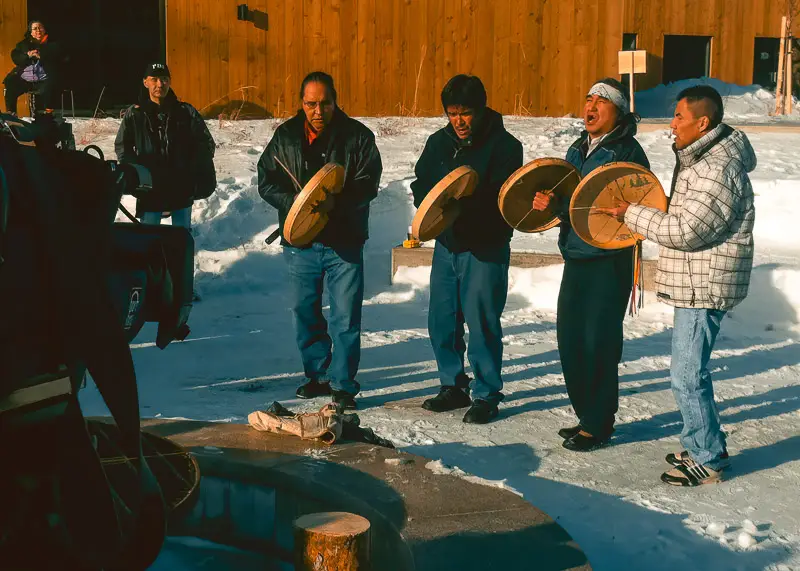
Amplifying Indigenous Voices: Promoting Cultural Heritage and Traditional Knowledge
Making movies is a powerful tool for giving a platform to underrepresented communities and spreading important messages. Filmmakers who collaborate with Canada’s Indigenous communities should honour the significance of Indigenous voices and stories, as well as champion Indigenous peoples’ efforts to preserve and share their rich cultural traditions and contemporary wisdom.
Atanarjuat: The Fast Runner, directed by Inuit filmmaker Zacharias Kunuk, is a great illustration of this method at work. The film’s usage of Inuktitut language and Indigenous performers makes it stand out as a unique representation of life in the Canadian Arctic. Internationally successful and much praised, Atanarjuat introduced people all over the world to Inuit history and culture.
Film is a strong medium for documenting and archiving Indigenous peoples’ histories, practices, and knowledge. Filmmakers can play an important role in preserving cultural traditions by documenting and spreading oral histories and rituals that have been passed down through the ages.
Respectful and collaborative filming practices are essential for effectively amplifying Indigenous perspectives and promoting cultural heritage. This calls for actively seeking out and responding to comments from community elders, leaders, and groups.
The uniqueness of Indigenous cultures and practices should be celebrated, rather than generalized. It is essential to recognize and appreciate the diversity that exists among all human communities.
There has been a rising effort in recent years to increase diversity and inclusion in the film business by giving more voice to Indigenous peoples. As a result, more people are hearing about the particular difficulties and potential benefits faced by Indigenous communities across Canada and the world.
Recognizing the weight of responsibility that comes with sharing the tales of Indigenous peoples is essential for every filmmaker. A more just and equitable society, in which all people’s voices are heard and respected, can be achieved through highlighting the contributions of Indigenous peoples and encouraging the preservation and dissemination of cultural artifacts and traditional knowledge.
This is the heading
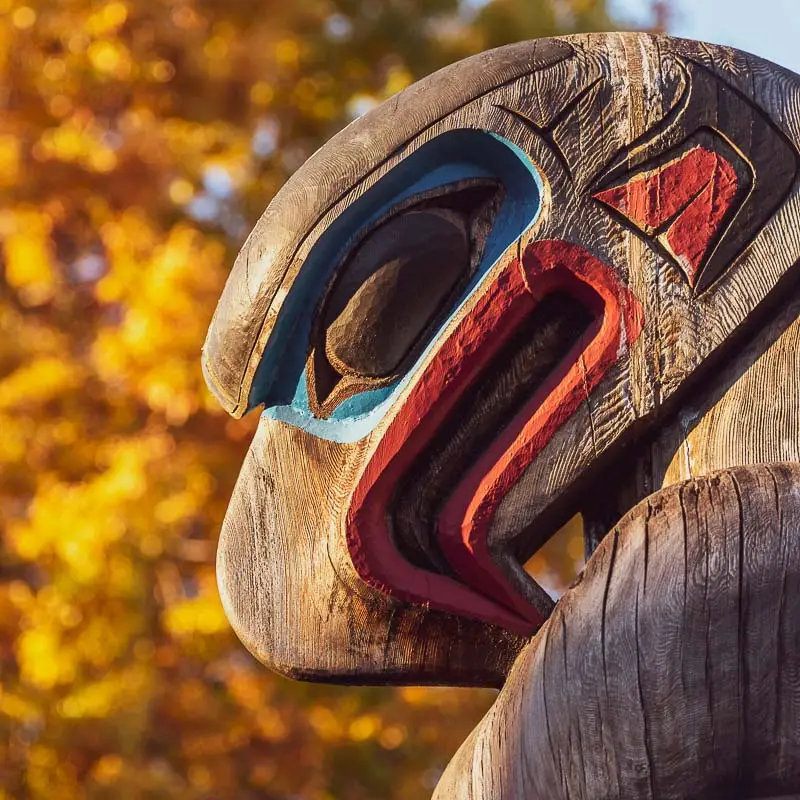
In conclusion, exploring the diverse cultures and traditions of First Nations communities in Canada is a rewarding experience for filmmakers seeking to create meaningful and impactful projects. By embracing the value of traditional knowledge, amplifying Indigenous voices, and showcasing the unique perspectives and traditions of different First Nations groups, filmmakers can create authentic and respectful works of art that not only entertain but also educate and inspire audiences around the world. As we continue to recognize the importance of cultural representation and diversity in media, we must prioritize giving a platform to voices that have been historically marginalized, and work towards a more inclusive and equitable film industry. By partnering with and learning from First Nations communities, we can tell stories that bridge cultural gaps and promote a greater understanding of the rich and multifaceted history of Indigenous peoples in Canada.

